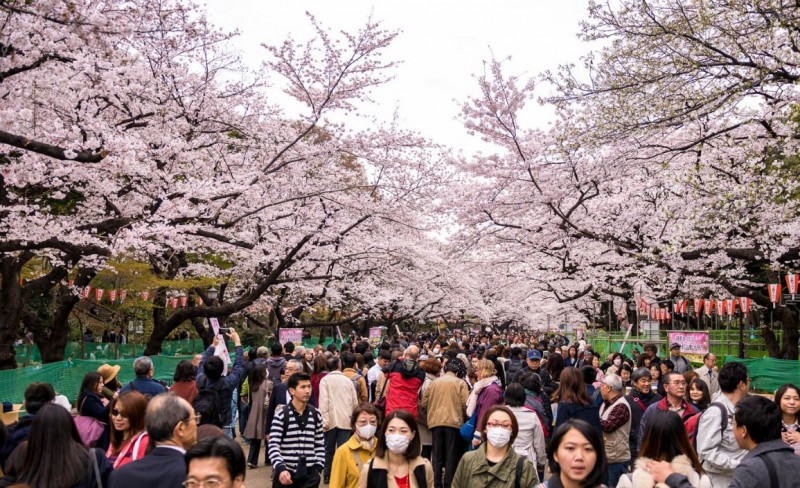
Introduction
Japan is a country rich in culture and traditions. One of the most beautiful and beloved traditions is called "hanami." Hanami, which translates to "flower viewing," refers to the centuries-old custom of gathering under cherry blossom trees to appreciate their beauty and enjoy picnics and socializing. This article will delve into the history, significance, and customs associated with hanami, showcasing why it holds a special place in the hearts of the Japanese people.
1. The Origin of Hanami
Hanami dates back over a thousand years to the Nara period (710-794) in Japan. Initially, it was a practice limited to the elite, who would admire the blossoms while composing and reciting poetry. Over time, this tradition spread to the common people, and hanami became a cherished custom for all.
2. Cherry Blossoms: Symbolism and Beauty
Cherry blossoms, known as "sakura" in Japanese, hold great symbolism in Japanese culture. They represent the transient nature of life, as the blossoms' beauty is fleeting and short-lived. The delicate pink and white petals symbolize purity, beauty, and the arrival of spring, marking the end of the cold winter months.
3. Timing and Locations of Hanami
Hanami season typically occurs between late March and early May, depending on the region and the weather. The cherry blossoms bloom at different times throughout Japan, starting from the southern regions and gradually moving northward. This natural progression is eagerly anticipated, and people plan their hanami gatherings accordingly.
4. Hanami Parties: Picnics and Socializing
Hanami is often celebrated with picnics and social gatherings under the cherry blossom trees. Families, friends, and colleagues come together to enjoy the scenic beauty, share delicious food and drinks, and engage in lively conversations. Parks and gardens with cherry blossom trees become vibrant and lively during this time, creating a festive atmosphere.
5. Traditional Hanami Customs
Traditional hanami customs include various activities and rituals. One such practice is "hanami dango," a type of sweet dumpling often enjoyed during the festivities. Another tradition is "hanami kaido," which involves taking leisurely strolls along the paths lined with cherry blossoms. These customs add depth and cultural significance to the hanami experience.
6. Modern Hanami Celebrations
While hanami has deep roots in tradition, it has also evolved to embrace modern elements. Today, hanami gatherings may include music performances, dance shows, and even fireworks displays. People capture the beauty of cherry blossoms through photography and share their experiences on social media platforms, connecting hanami enthusiasts from around the world.
7. Hanami and Japanese Culture
Hanami holds a significant place in Japanese culture, representing a time of renewal, appreciation, and togetherness. It is an opportunity for reflection and gratitude, as people witness the ephemeral beauty of nature. Hanami also serves as a reminder of the importance of harmony and the transient nature of life.
8. Hanami Around the World
The beauty and allure of hanami have transcended borders, captivating people from different cultures worldwide. Hanami-inspired festivals and events can be found in various countries, allowing individuals to experience the joy and tranquility associated with this cherished Japanese tradition.
9. Etiquette and Tips for Hanami
Participating in hanami requires observing certain etiquette to ensure a pleasant experience for everyone involved. Some common practices include respecting the trees and nature, cleaning up after the picnic, and being mindful of noise levels. Additionally, it is important to be aware of local rules and regulations regarding hanami celebrations.
10. Hanami-Inspired Art and Literature
Hanami has inspired countless works of art, literature, and poetry throughout Japanese history. Renowned artists and writers have captured the essence of hanami through vivid imagery and evocative storytelling, further enhancing its cultural significance.
11. The Economic Impact of Hanami
Hanami season attracts a significant number of tourists both domestically and internationally. This influx of visitors has a positive impact on local economies, benefiting businesses such as hotels, restaurants, and souvenir shops. Hanami has become an integral part of the tourism industry in Japan.
12. Hanami Festivals and Events
Hanami festivals and events are held in various cities and regions across Japan. These gatherings often feature traditional performances, music, dance, and food stalls, creating a festive and vibrant atmosphere. Some renowned hanami festivals include the cherry blossom festivals in Tokyo, Kyoto, and Osaka.
13. Climate Change and Hanami
Climate change poses a threat to the timing and duration of hanami season. Rising temperatures and unpredictable weather patterns can disrupt the delicate balance needed for cherry blossoms to bloom. Efforts are being made to study and mitigate the impact of climate change on hanami, ensuring future generations can continue to enjoy this cherished tradition.
14. Hanami: A Source of Inspiration
The beauty and serenity of hanami have inspired people beyond its cultural context. Artists, poets, and individuals seeking tranquility find solace and inspiration in the ephemeral nature of cherry blossoms. Hanami serves as a reminder to appreciate the fleeting moments and find beauty in impermanence.
15. Conclusion
Hanami is not merely a seasonal celebration in Japan; it is a reflection of the country's cultural heritage, appreciation for nature, and the transient nature of life itself. The tradition of gathering under cherry blossom trees to enjoy their breathtaking beauty and create lasting memories continues to captivate people around the world. So, whether you are in Japan or elsewhere, take a moment to immerse yourself in the enchanting world of hanami and embrace the beauty of cherry blossoms.
Exploring the World's Most Impressive Waterfalls
Explore The Enhancing Beauty of Pachmarhi: A Journey to the Queen of Satpura
Floating on the Dead Sea: Exploring the High Buoyancy and Unique Beauty of this Natural Wonder